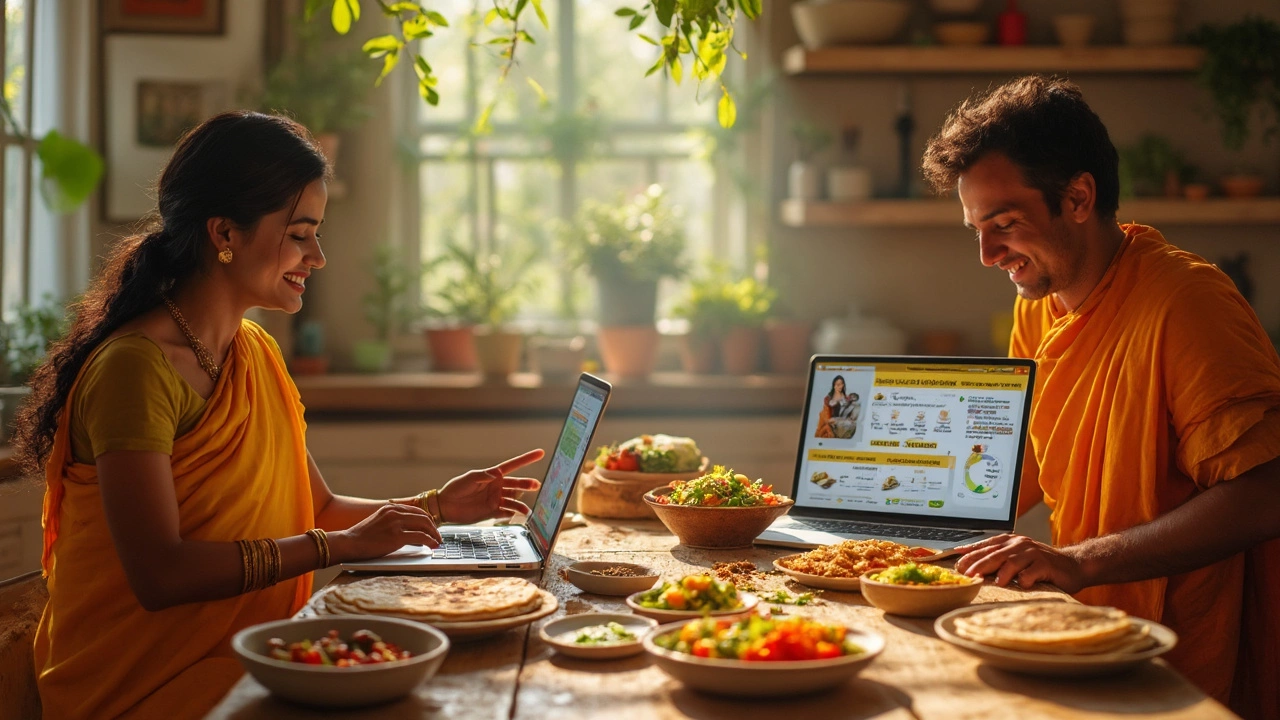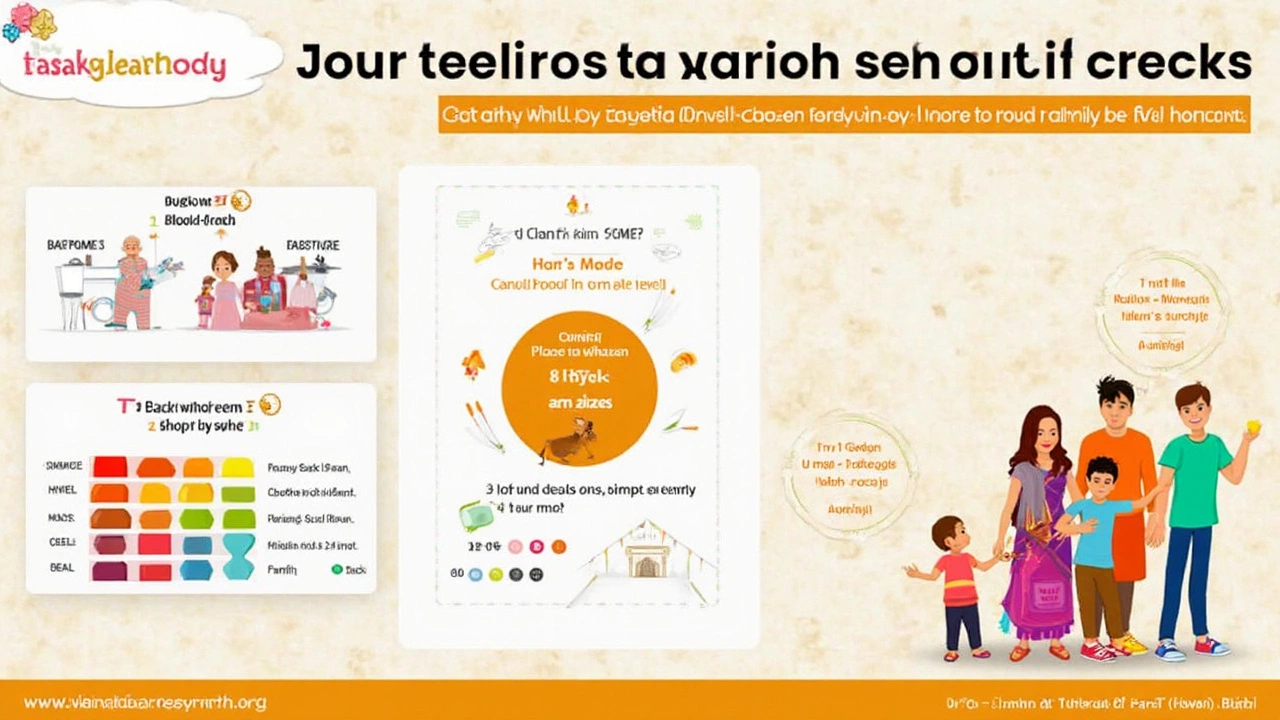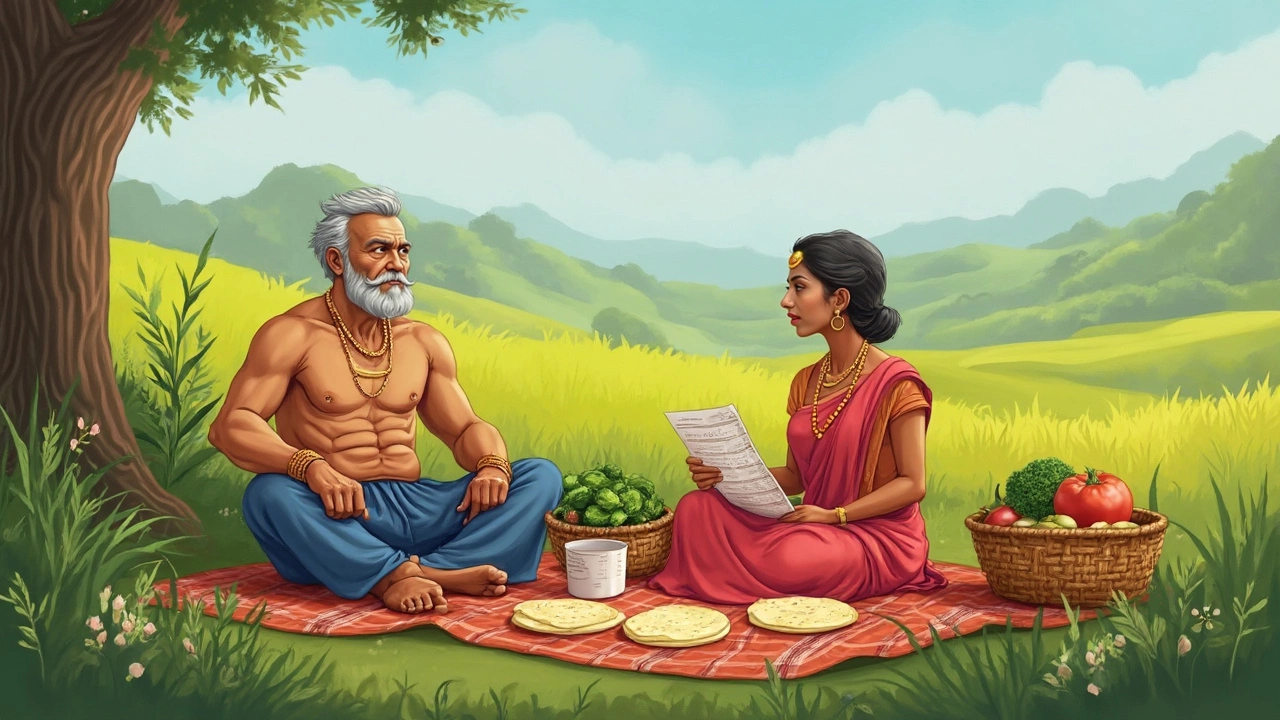The Right Number of Chapatis to Eat Daily for a Healthy Diet
 Feb, 27 2025
Feb, 27 2025
Chapatis, a staple in many Indian households, are not just about taste but also health. Ever wondered how many you should eat daily? It's not just a random number. It involves a bit of science, a dash of local tradition, and, believe it or not, some legal guidelines about dietary recommendations.
To get started, you'll want to have a look at your Body Mass Index (BMI). This handy little number gives you a quick snapshot of where you stand weight-wise in relation to your height. It's easier than you think to calculate, and knowing your BMI can help tailor your daily chapati intake.
But that's not all. Did you know you can utilize a calorie calculator to fine-tune your diet? This nifty tool can estimate how many calories you need per day and help you figure out how many chapatis, considering the calories in one roti, fit in. Let's break this all down, step by step, to get you on the road to a balanced diet.
- Understanding the Basics of Chapatis
- The Role of BMI in Your Diet
- How to Use a Calorie Calculator
- Local Variations and Recommendations
- Legal Aspects of Dietary Recommendations
Understanding the Basics of Chapatis
Chapatis are an essential part of Indian meals, often paired with vegetables, lentils, or curry. Made from whole wheat flour, these flatbreads are not only tasty but also come with a good nutrient profile.
The Nutritional Breakdown
One roti, or chapati, usually contains about 70-80 calories. That might not seem like much, but it certainly adds up, especially when you're having several at a meal. Usually, a chapati provides around 15 grams of carbohydrates, 3 grams of protein, and negligible fat, making it a preferred choice for a balanced diet.Why Chapatis?
Many households prefer chapatis over rice due to their lower glycemic index. This means they release glucose into the bloodstream slowly, which is particularly beneficial for individuals managing diabetes. Also, being high in fiber, chapatis aid digestion and help maintain a healthy weight. But wait, how many Chapatis Should You Eat in a Day? This is where your BMI or Body Mass Index comes into play.Legal Aspects and Dietary Guidelines
In several countries, including India, dietary recommendations are often legally established by health authorities. These recommendations guide citizens in making healthier food choices. For chapatis, the Indian Council of Medical Research often provides guidelines on daily servings, which can be useful when planning meals to ensure nutritional adequacy.Local Preferences
In northern parts of India, chapatis are a daily staple, whereas in the southern regions, rice dominates. This local dietary preference greatly influences how chapatis are incorporated into meals. Whether you're in Delhi or Hyderabad, understanding these preferences can help tailor your diet better.It's crucial to consider your personal energy needs, health goals, and the advice of your healthcare provider, especially when calculating daily caloric needs using a calorie calculator. Remember, it's not one-size-fits-all. Personalization is key!
The Role of BMI in Your Diet
Ever looked at two people and wondered how they eat the same thing but look so different? That's where Body Mass Index (BMI) steps in. It's a straightforward metric that helps you understand where you stand health-wise. Calculating your BMI is pivotal because it influences how many chapatis you should eat in a day to maintain a balanced diet.
How to Calculate Your BMI
Calculating your BMI isn't rocket science. It's a simple formula that involves your weight and height. Here's how you can do it:
- Find out your weight in kilograms.
- Measure your height in meters.
- Apply this formula:
BMI = weight (kg) / (height (m) * height (m)).
Once you have your BMI, compare it with the standard BMI categories:
| BMI Category | BMI Range |
|---|---|
| Underweight | Less than 18.5 |
| Normal weight | 18.5 - 24.9 |
| Overweight | 25 - 29.9 |
| Obesity | 30 or more |
Why Does BMI Matter for Chapati Intake?
So, why does your BMI play such a big role in deciding your chapati consumption? Well, if your BMI sits in the 'Normal weight' range, you might comfortably have more chapatis compared to someone whose BMI is in the 'Overweight' category. The whole point is to balance your calorie intake, which makes check-ins with a calorie calculator even more vital.
Local Insights and Legal Stuff
India, being a diverse country, has different dietary customs. Urban diets differ significantly from rural diets, and portion sizes matter. Legal guidelines often recommend ideal serving sizes and calorie ranges in food packaging—as per the Food Safety and Standards Authority of India—to help maintain a healthy BMI. Adhering to these not only keeps you informed but also legally compliant with dietary recommendations.
In summary, understanding the role of BMI can make a massive difference in planning how to nourish your body with the right number of calories in one roti. Simple, right?

How to Use a Calorie Calculator
Trying to figure out how many chapatis you should eat in a day? A calorie calculator is the go-to tool. These calculators help you determine how many calories you need daily based on various factors like age, gender, activity level, and Body Mass Index (BMI).
Step-by-Step Guide to Using a Calorie Calculator
- Gather Your Data: Start by collecting essential info: your weight, height, age, and activity level. This info is usually necessary for any calorie calculator.
- Understand Your BMI: Check your BMI if you haven't already. Many calculators may ask for it, and it's a great metric to have on hand.
- Choose a Reliable Calculator: Online tools like MyFitnessPal or HealthifyMe are great since they are easy to use and adjust for local foods, like chapatis.
- Plug in Your Details: Enter your data into the calculator. Be as accurate as possible, because the tool relies on this information to give you reliable results.
- Read Your Results: The calculator should spit out a daily calorie target. Use this to balance the number of chapatis you consume, based on the calories in one roti, among other foods.
Understanding the Local Impact
Different regions have various legal standards and guidelines about nutritional intake. In India, the Food Safety and Standards Authority (FSSAI) often provides recommendations on carbohydrate intake, which would include chapatis.
Legal Considerations
When it comes to dietary advice, sticking to legally recognized guidelines is crucial. For instance, any health claims should align with national health policies to avoid misinformation, which could be misleading and potentially harmful.
Using a calorie calculator can give you a good estimation of how many chapatis fit into your healthy diet. Remember, it’s not just about the calories but also about aligning with broader dietary guidelines and nutrients you need for a balanced diet.
Local Variations and Recommendations
In India, chapatis are more than just food—they're part of the culture, varying greatly from region to region. How many Chapatis Should You Eat in a Day? That can depend on where you are and what local customs dictate.
North vs. South
In the north, chapatis often steal the spotlight. With wheat as a staple crop, a meal sometimes includes 2 to 3 chapatis per person, often accompanied by a range of dals and curries. The nutritional preference leans towards a balanced yet robust meal.
Slide down to southern parts, and you'll notice a shift in focus towards rice. However, chapatis still make an appearance with recommendations of about 1 to 2 chapatis per meal, complementing dishes like sambhar and rasam.
Urban vs. Rural
Urban dining habits have evolved; fast-paced city life sees some people opting for fewer chapatis to maintain their BMI. A typical urban meal might consist of only one chapati alongside salads and soups. In contrast, rural areas may focus on more calorie-dense meals due to the physical demands of agriculture, consuming up to 4 chapatis per meal.
Calculating Your Ideal Intake
Here’s how you can personalize your chapati intake:
- Calculate your Body Mass Index (BMI): This step involves knowing your weight and height. Plug these into a BMI calculator and note your result.
- Use a calorie calculator: Understand how many calories you need daily. Factor in the calories in one roti (roughly 70 calories) to decide how many fit your diet.
- Local influences: Consider your local dietary habits and physical activity levels. This is vital for ensuring you aren't straying too far from what your body truly needs.
| Region | Chapatis per Meal |
|---|---|
| North India | 2-3 |
| South India | 1-2 |
| Urban India | 1-2 |
| Rural India | 3-4 |
Legal Aspects
In India, dietary guidelines are often subject to recommendations from the Food Safety and Standards Authority of India (FSSAI). While no law mandates the exact number of chapatis, guidelines suggest a balanced diet that includes whole grains, including chapatis depending on your caloric needs.
The takeaway is simple: balance your chapati intake with your lifestyle, local habits, and legal considerations to ensure a healthy diet.

Legal Aspects of Dietary Recommendations
When it comes to dietary guidelines, understanding the legal aspects can be a real eye-opener. Governments worldwide set these guidelines to help people lead healthier lives. In India, agencies such as the Food Safety and Standards Authority of India (FSSAI) play a crucial role in this arena.
FSSAI sets the standards for food safety, ensuring that what we consume is not only safe but also conducive to health. Their role includes providing science-based advice to the public. They publish various guidelines that can influence how many Chapatis Should You Eat in a Day as part of a balanced diet.
Guidance from FSSAI
- Follow the “Eat Right India” campaign aimed at creating awareness about healthy eating.
- Adopt dietary practices recommended, focusing on a balance of cereals like rice and chapati.
In addition to FSSAI, local health departments also play a key role. They disseminate this information across the community level, ensuring that locals have access to these guidelines, either through health campaigns or community-based programs.
Regional Influence
Different regions might have specific recommendations about chapati consumption based on local food habits and agricultural produce. For instance, chapatis might be more prominent in North Indian diets, influencing regional dietary suggestions.
New regulations sometimes emerge with updated research. So, staying abreast of guidelines, perhaps through local bulletins or community health seminars, can be a game-changer for maintaining a healthy diet. Leveraging online platforms to check the latest from FSSAI or even utilizing a calorie calculator can align personal plans with legal dietary frameworks.